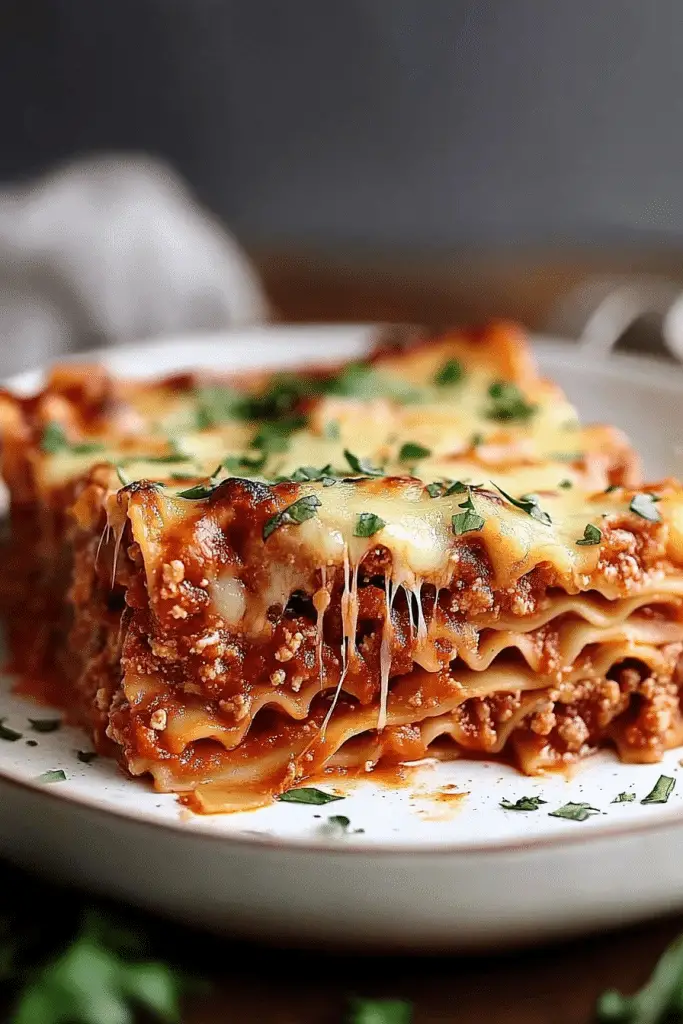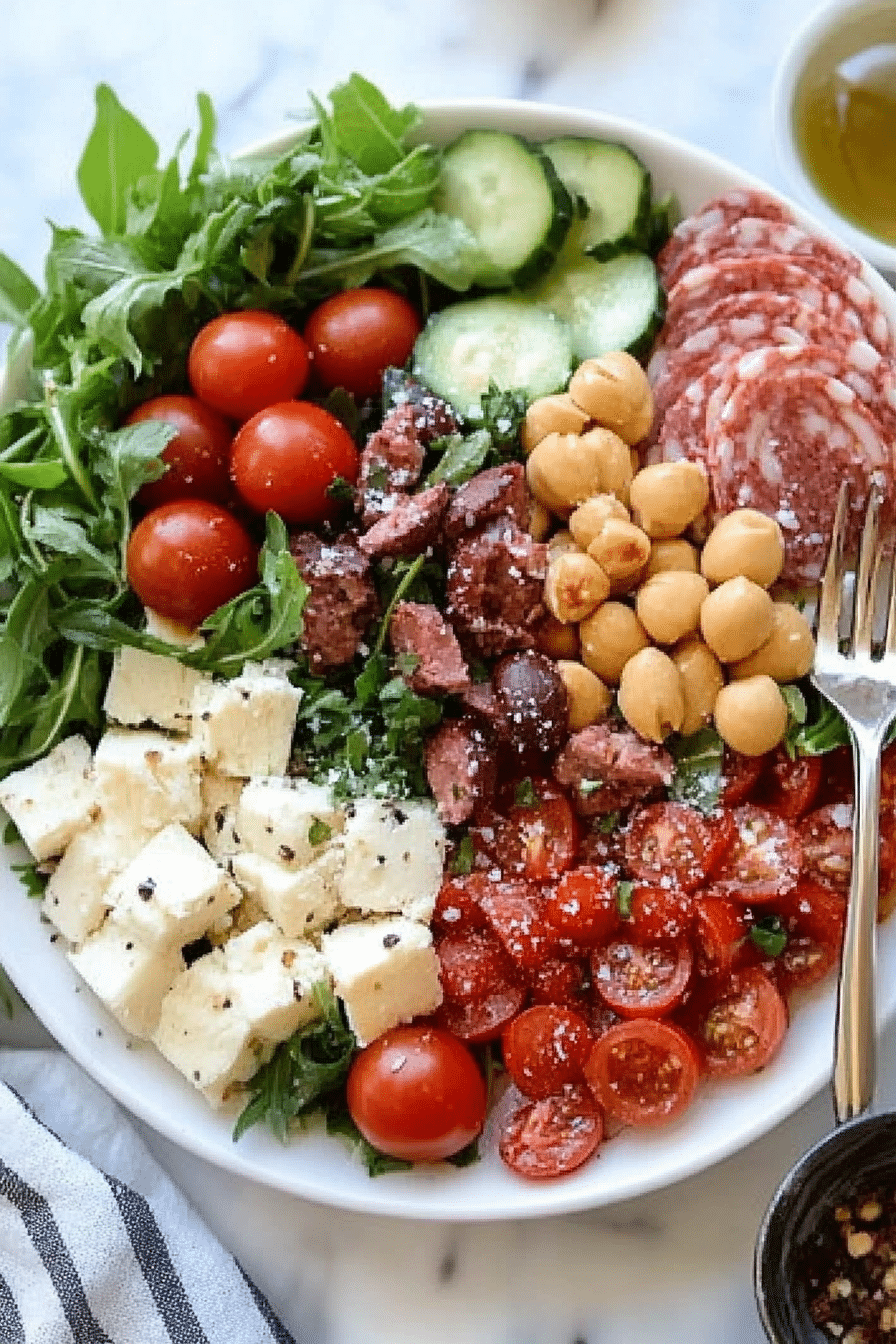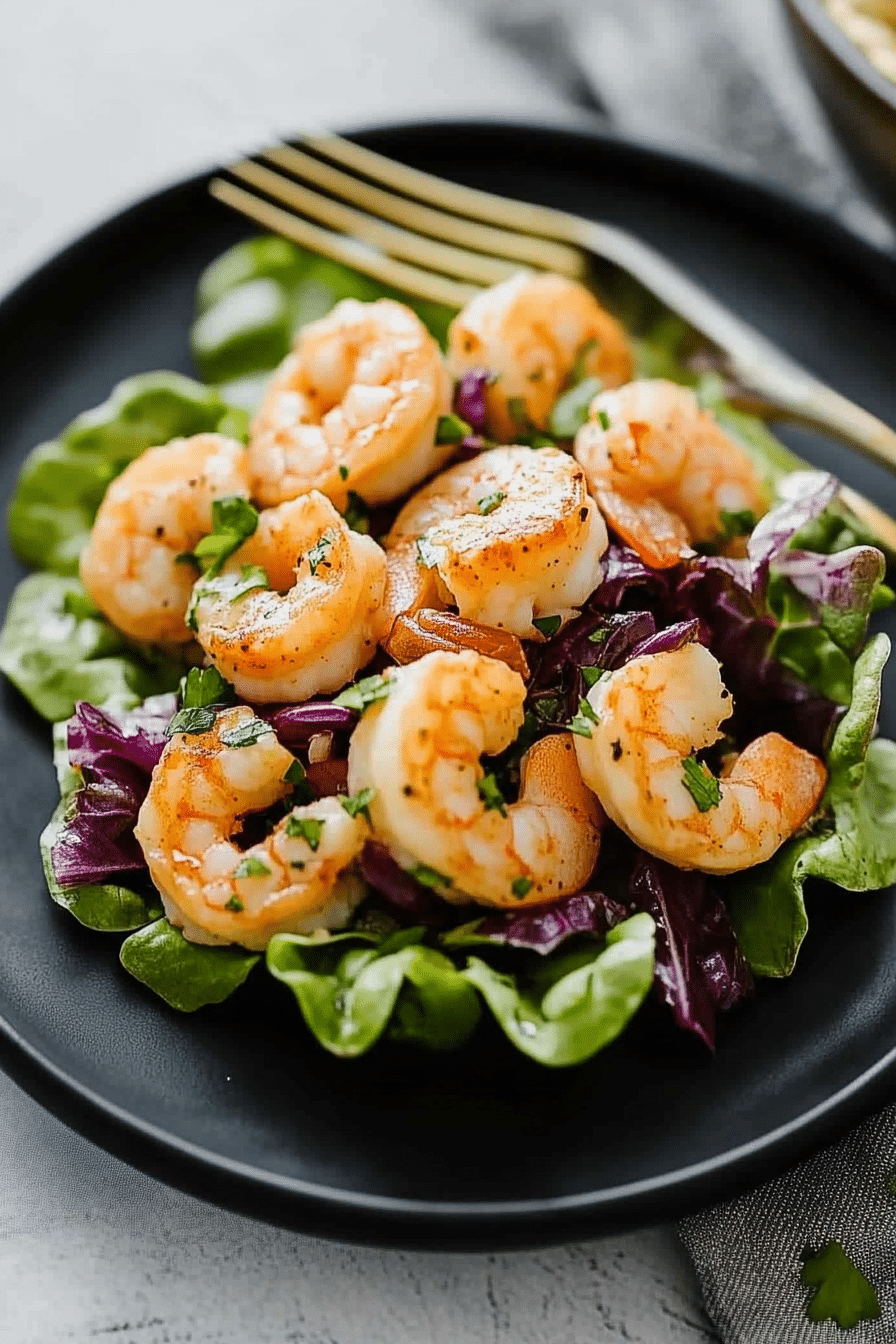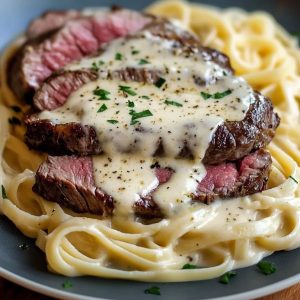There are certain dishes that just feel like a warm hug, aren’t there? For me, that’s Homemade Lasagna. It’s not just food; it’s memories baked into layers of tender pasta, rich meat sauce, and creamy béchamel. I remember my grandmother making it on Sundays, the whole house filling with that incredible aroma. It was always the centerpiece of our family meals, and honestly, trying to find a store-bought version that even comes close is a challenge I usually give up on. This recipe isn’t just about replicating that nostalgia; it’s about capturing that soul-warming goodness and making it achievable in your own kitchen. Forget those dry, bland imitations; this is the real deal, and it’s surprisingly manageable, even on a weeknight if you plan a little ahead.
Thank you for reading this post, don't forget to subscribe!What is a home made lasagna?
So, what exactly makes this homemade lasagna so special? At its heart, it’s layers of flat pasta sheets, a savory Meat Sauce, a creamy béchamel or ricotta mixture, and of course, a generous blanket of cheese. But the magic is in the details, isn’t it? It’s about taking simple, honest ingredients and transforming them into something truly spectacular. Think of it as a culinary masterpiece built from the ground up, where each component plays a crucial role. It’s more than just a dish; it’s an experience, a labor of love that rewards you tenfold with every forkful. It’s the ultimate comfort food, the kind that makes you want to gather everyone around the table and just savor the moment.
Why you’ll love this recipe?
Honestly, I could write a novel about why I adore this homemade Lasagna Recipe, but let me try to boil it down to the essentials. First and foremost, the FLAVOR. Oh my goodness, the flavor! It’s a symphony of rich tomato, savory beef (or a mix of meats if you’re feeling fancy!), aromatic herbs, and that luscious, creamy béchamel that just melts in your mouth. It’s comforting, deeply satisfying, and has a complexity that store-bought just can’t touch. Then there’s the SIMPLICITY. Now, I know “lasagna” can sound intimidating, but I’ve streamlined this recipe over the years to be incredibly straightforward. It’s surprisingly easy to assemble, and the results are restaurant-quality, making you feel like a culinary rockstar. It’s also remarkably COST-EFFECTIVE. When you consider how much a comparable dish would cost at a good Italian restaurant, making this at home is a huge money-saver, especially when you’re feeding a crowd. And the VERSATILITY! This recipe is a fantastic base. You can easily swap out the meats, add extra veggies, or even make a vegetarian version. It’s a winner for picky eaters (my kids devour it!) and a guaranteed crowd-pleaser for dinner parties or potlucks. What I love most about this is that it tastes like it took all day, but with a little organization, it’s totally manageable. It’s the kind of dish that makes people ask for the recipe, and isn’t that the highest compliment?
How do I make homemade lasagna?
Quick Overview
Making this homemade lasagna is all about building layers of flavor and texture. We’ll start by creating a rich, slow-simmered Meat Sauce, whip up a silky smooth béchamel, and then assemble everything with tender pasta sheets and plenty of cheese. The key is to let the flavors meld beautifully in the oven, resulting in a dish that’s incredibly satisfying and comforting. It’s straightforward enough that even if you’re new to making lasagna from scratch, you’ll feel confident and capable. Trust me, the effort is absolutely worth it!
Ingredients
What is the recipe for meat sauce?
2 tablespoons olive oil
1 large onion, finely chopped
3 cloves garlic, minced
1 pound Ground Beef (80/20 is great for flavor)
1/2 pound ground Italian sausage (sweet or spicy, your preference!)
1 teaspoon dried oregano
1 teaspoon dried basil
1/2 teaspoon red pepper flakes (optional, for a little kick)
1 (28 ounce) can crushed tomatoes
1 (15 ounce) can tomato sauce
2 tablespoons tomato paste
1/4 cup dry red wine (like Chianti or Merlot, optional but adds depth)
Salt and freshly ground black pepper to taste
For the Béchamel Sauce:
1/2 cup (1 stick) unsalted butter
1/2 cup all-purpose flour
4 cups whole milk, warmed
1/2 teaspoon salt
1/4 teaspoon freshly ground nutmeg
For Assembly:
12-15 lasagna noodles (no-boil or regular, your preference)
15 ounces ricotta cheese (whole milk is best)
1 large egg, lightly beaten
1/4 cup grated Parmesan cheese, plus more for topping
1 tablespoon chopped fresh parsley (optional)
8 ounces shredded mozzarella cheese
Step-by-Step Instructions
Step 1: Preheat & Prep Pan
First things first, let’s get our oven ready. Preheat it to 375°F (190°C). Now, grab a 9×13 inch baking dish. If you’re using regular lasagna noodles, you’ll want to cook them according to package directions until they’re al dente (still have a slight bite). Drain them and lay them flat on parchment paper or a clean kitchen towel to prevent them from sticking together. If you’re using no-boil noodles, you can skip this step!
Step 2: Mix Dry Ingredients
Okay, for the meat sauce, heat the olive oil in a large pot or Dutch oven over medium heat. Add the chopped onion and cook until it’s softened and translucent, about 5-7 minutes. Toss in the minced garlic and cook for another minute until fragrant. Then, add the ground beef and Italian sausage. Break it up with a spoon and cook, stirring occasionally, until browned. Drain off any excess grease.
Step 3: Mix Wet Ingredients
To the browned meat, stir in the oregano, basil, and red pepper flakes (if using). Pour in the crushed tomatoes, tomato sauce, and tomato paste. If you’re using red wine, add it now – it really does make a difference! Stir everything to combine. Bring the sauce to a simmer, then reduce the heat to low, cover, and let it cook for at least 30 minutes, or up to an hour, stirring occasionally. This slow simmer is crucial for developing deep flavor. Season with salt and pepper to your liking.
Step 4: Combine
While the meat sauce is simmering, let’s make that luscious béchamel. In a medium saucepan, melt the butter over medium heat. Whisk in the flour and cook for about 1 minute, whisking constantly, to make a roux. Gradually whisk in the warmed milk, a little at a time, ensuring no lumps form. Continue to cook and whisk until the sauce has thickened enough to coat the back of a spoon, about 5-7 minutes. Stir in the salt and nutmeg. Don’t let it boil vigorously.
“Packed with flavor and so simple. Exactly what I wanted from this homemade lasagna!”
Step 5: Prepare Filling
In a medium bowl, combine the ricotta cheese, the lightly beaten egg, 1/4 cup grated Parmesan cheese, and chopped fresh parsley (if using). Mix until well combined. This ricotta mixture adds a lovely creaminess and a slightly tangy counterpoint to the rich meat sauce.
Step 6: Layer & Swirl
Now for the fun part: assembling the lasagna! Spread a thin layer of the meat sauce on the bottom of your prepared baking dish. This prevents the pasta from sticking. Arrange a layer of lasagna noodles over the sauce. Then, spread half of the ricotta mixture evenly over the noodles. Spoon about one-third of the remaining meat sauce over the ricotta. Drizzle about one-third of the béchamel sauce over the meat sauce. Sprinkle with about one-third of the shredded mozzarella cheese.
Repeat these layers: noodles, the rest of the ricotta, another third of the meat sauce, another third of the béchamel, and another third of the mozzarella. For the final layer, place the remaining noodles, top with the rest of the meat sauce, then the rest of the béchamel sauce. Finish with a generous sprinkle of Parmesan and the remaining mozzarella cheese.
Step 7: Bake
Cover the baking dish tightly with aluminum foil. Bake in the preheated oven for 25 minutes. Then, remove the foil and bake for another 20-25 minutes, or until the cheese is melted and bubbly and the edges are golden brown and delicious. The aroma that fills your kitchen at this point is pure bliss!
Step 8: Cool & Glaze
This is probably the hardest step: letting it rest! Once it comes out of the oven, let the lasagna sit for at least 10-15 minutes before slicing. This allows the layers to set, making it much easier to cut neat slices and preventing it from falling apart. If you’re feeling extra fancy, you can drizzle a little extra béchamel or a dollop of ricotta on top just before serving, but it’s honestly perfect as is.
Step 9: Slice & Serve
Using a sharp knife or a spatula, carefully cut the lasagna into generous portions. Serve warm, with extra Parmesan cheese on the side if anyone fancies it. The combination of textures and flavors is just heavenly – tender pasta, robust sauce, creamy cheese… it’s everything you want in a comforting meal.
What to Serve It With
This homemade lasagna is such a complete meal on its own, but I love pairing it with a few simple sides that complement its richness without overpowering it. For a casual weeknight dinner, a big, fresh green salad with a light vinaigrette is my go-to. It cuts through the richness beautifully. If you’re having guests or want to elevate it a bit, some crusty garlic bread is always a winner. It’s perfect for sopping up any extra sauce that might linger on the plate. For a more traditional Italian feel, consider serving it alongside some simple roasted vegetables, like asparagus or broccoli, tossed with a little olive oil, salt, and pepper. And don’t forget the wine! A medium-bodied red, like a Chianti or a Barbera, pairs wonderfully with the tomato and meat flavors.
Top Tips for Perfecting Your Homemade Lasagna
Over the years, I’ve learned a few tricks that really make a difference in getting that perfect homemade lasagna every single time. Let’s dive into some of my best tips:
Sauce Savvy: Don’t rush the meat sauce. Letting it simmer for at least 30 minutes, ideally longer, allows the flavors to deepen and meld beautifully. Taste and adjust seasoning at the end – sometimes it needs a pinch more salt or a touch more pepper. If you have time, using a mix of ground beef and pork or Italian sausage adds incredible depth of flavor.
Béchamel Bliss: When making the béchamel, make sure your milk is warmed. Adding cold milk to a hot roux can lead to lumps. Whisking constantly and adding the milk gradually is key to a smooth, velvety sauce. If you do end up with a few lumps, don’t despair! You can often strain the sauce through a fine-mesh sieve. A tiny pinch of nutmeg is a secret weapon – it really enhances the creamy flavor without making it taste like nutmeg.
Noodle Nuances: If you’re using regular lasagna noodles, cook them just until al dente – they’ll continue to cook in the oven. Laying them flat after draining prevents them from sticking. No-boil noodles are a lifesaver for busy nights, but make sure they’re fully submerged in sauce and béchamel to cook properly. I’ve found that no-boil noodles sometimes absorb more liquid, so you might need a little extra sauce.
Ricotta Refresh: For the ricotta mixture, I always use whole milk ricotta. It’s richer and creamier. Adding the egg helps bind it all together, and a little Parmesan cheese adds a nice savory note. Don’t skip the fresh parsley if you can help it; it adds a lovely freshness.
Layering Logic: The order of operations in layering is important for even cooking and flavor distribution. Start with sauce on the bottom to prevent sticking. Then noodles, ricotta, meat sauce, béchamel, and cheese. Repeat. Ensure you’re spreading each layer fairly evenly. The final layer of béchamel and cheese is crucial for that golden, bubbly top!
Baking Best Practices: Covering with foil at first steams the lasagna and ensures everything cooks through without the top burning. Removing the foil allows the cheese to brown and get deliciously crispy. If your oven tends to run hot or cold, an oven thermometer can be a lifesaver. And please, please, let it rest! It makes all the difference in slicing and presentation. I learned that lesson the hard way many times!
“I don’t know if I’ve ever eaten a better homemade lasagna. The rub alone is wonderful, but the sauce??? Over the top!”
Ingredient Swaps: Feel free to use a blend of ground meats (beef, pork, lamb, turkey) for your sauce. For a vegetarian option, I’ve had great success with finely chopped mushrooms, zucchini, and bell peppers sautéed until tender, then mixed with the tomato sauce. If you don’t have béchamel, a good quality ricotta mixed with a little milk and egg can work in a pinch, but the béchamel truly elevates it.
Storing and Reheating Tips
This homemade lasagna is fantastic for leftovers, which is why I often make a double batch! Here’s how I usually store and reheat it to keep it tasting just as good as the first day:
Room Temperature: If you’re serving it shortly after it’s finished baking and cooling a bit, it can sit out for about an hour. Any longer than that, and it’s best to get it into the fridge.
Refrigerator Storage: Once the lasagna has cooled down completely (this is important for food safety and to prevent condensation), wrap it tightly in plastic wrap or transfer it to an airtight container. It will keep well in the refrigerator for 3-4 days. I often find the flavors are even better on day two!
Freezer Instructions: Lasagna freezes beautifully! You can freeze the whole pan (baked or unbaked) or individual portions. For best results, wrap the cooled lasagna tightly in a couple of layers of plastic wrap, followed by a layer of aluminum foil to prevent freezer burn. It can stay in the freezer for up to 3 months. To thaw, transfer it to the refrigerator overnight. If you’re reheating from frozen, you’ll need to add more baking time and cover it initially.
Glaze Timing Advice: For storing, I usually add all the cheese on top before refrigerating or freezing. If you want to add a fresh glaze or topping after reheating, that’s a great idea for presentation, but it’s not strictly necessary for flavor. I generally don’t add a separate “glaze” like you would for a cake; the béchamel and cheese create that wonderful topping as it bakes.
Reheating: To reheat a portion in the microwave, cover it loosely with a damp paper towel and heat on medium power until warmed through. For a whole pan or larger portions, the oven is best. Cover with foil and bake at 350°F (175°C) until heated through. If it was frozen, you’ll need to bake it longer, possibly starting it covered and then uncovering to brown the top.
Frequently Asked Questions
Final Thoughts
There you have it – my most cherished homemade lasagna recipe! I truly believe this dish embodies the very best of home cooking: incredible flavor, heartwarming comfort, and a sense of accomplishment. It’s a recipe that’s been tested, tweaked, and loved in my kitchen for years, and I can’t wait for it to become a favorite in yours too. It’s perfect for those Sunday dinners, special occasions, or just when you need a serious dose of comfort. If you love this recipe, you might also enjoy my creamy Chicken Alfredo or my hearty Beef Stew – they’re also winners in my book! Give this lasagna a try, and I hope it brings as much joy and deliciousness to your table as it does to mine. I’d absolutely love to hear how it turns out for you, so please leave a comment below and share your own tips or variations! Happy baking!
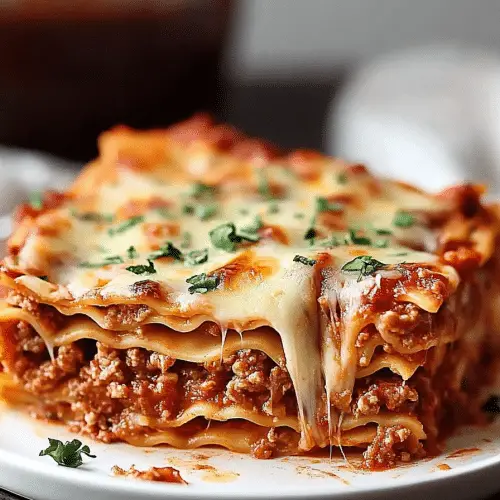
Homemade Lasagna
Ingredients
Meat Sauce
- 0.5 pound ground beef
- 0.5 pound ground pork
- 0.5 cup onion finely chopped
- 2 cloves garlic minced
- 0.5 cup red wine optional
- 0.5 cup crushed tomatoes
- 0.25 cup tomato paste
- 1 teaspoon dried oregano
- 0.5 teaspoon dried basil
- 0.25 teaspoon red pepper flakes optional
- 0.5 teaspoon salt
- 0.25 teaspoon black pepper
Béchamel Sauce
- 0.5 cup butter
- 0.5 cup all-purpose flour
- 4 cups milk warm
- 0.5 teaspoon salt
- 0.25 teaspoon nutmeg freshly grated, optional
Assembly
- 12 sheets lasagna noodles cooked according to package directions
- 2 cups mozzarella cheese shredded
- 0.5 cup Parmesan cheese grated
Instructions
Make the Meat Sauce
- In a large pot or Dutch oven, cook the ground beef and pork over medium heat until browned. Drain off any excess fat.
- Add the chopped onion and cook until softened, about 5 minutes. Add the minced garlic and cook for another minute until fragrant.
- If using, pour in the red wine and scrape up any browned bits from the bottom of the pot. Let it simmer until mostly evaporated.
- Stir in the crushed tomatoes, tomato paste, oregano, basil, red pepper flakes (if using), salt, and black pepper. Bring to a simmer, then reduce heat and cook, uncovered, for at least 30 minutes, stirring occasionally. The longer it simmers, the richer the flavor.
Make the Béchamel Sauce
- In a medium saucepan, melt the butter over medium heat. Whisk in the flour and cook for 1-2 minutes, stirring constantly, to form a roux.
- Gradually whisk in the warm milk, a little at a time, making sure each addition is incorporated before adding more. Continue whisking until the sauce is smooth and thickened.
- Bring the sauce to a gentle simmer and cook for about 5 minutes, stirring frequently, until it coats the back of a spoon. Stir in salt and nutmeg (if using).
Assemble the Lasagna
- Preheat your oven to 375°F (190°C).
- Spread a thin layer of meat sauce on the bottom of a 9x13 inch baking dish.
- Arrange a layer of cooked lasagna noodles over the sauce, breaking them to fit if necessary.
- Spread about one-third of the béchamel sauce over the noodles, followed by about one-third of the remaining meat sauce.
- Sprinkle with about one-third of the mozzarella and Parmesan cheeses.
- Repeat the layering process two more times, ending with a layer of noodles topped with the remaining béchamel sauce and cheeses.
Bake the Lasagna
- Cover the baking dish tightly with aluminum foil.
- Bake for 25 minutes.
- Remove the foil and bake for another 20-25 minutes, or until the top is golden brown and bubbly.
- Let the lasagna rest for at least 10-15 minutes before slicing and serving.


